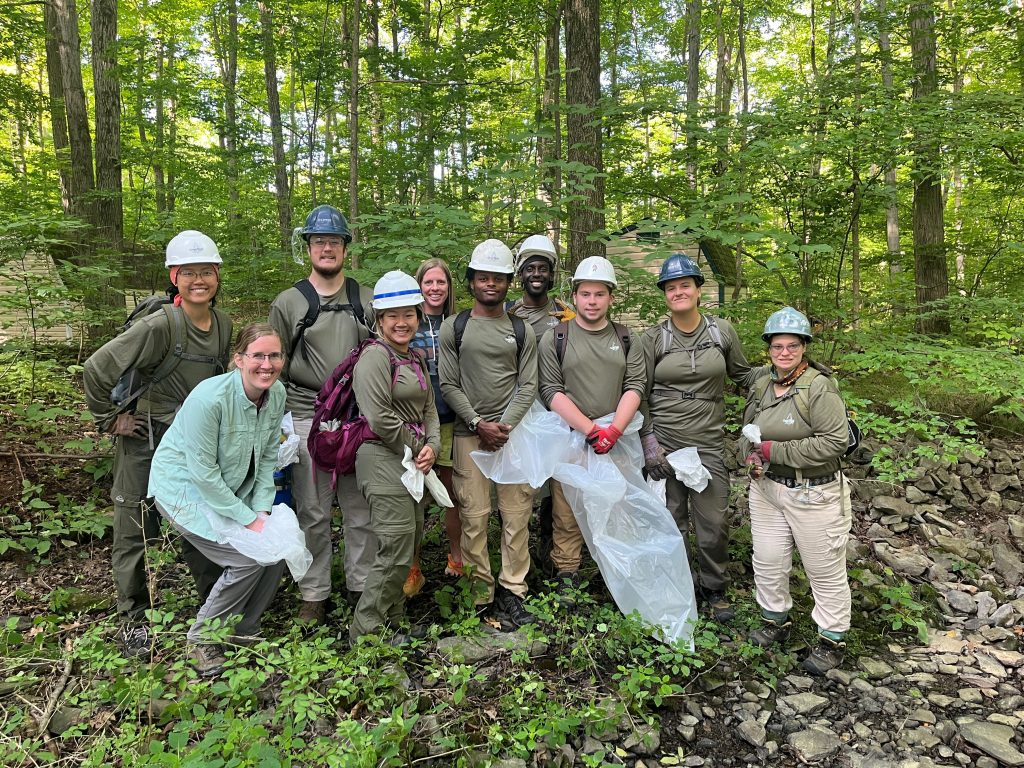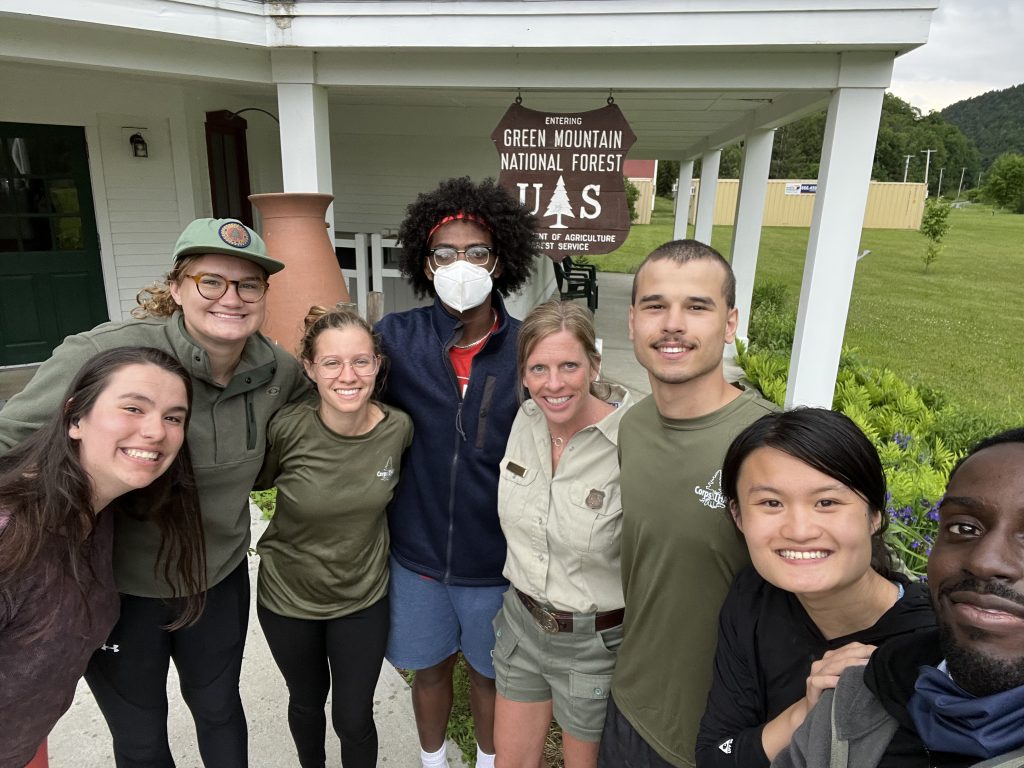Partnerships Continue to Help Conserve the Finger Lakes National Forest
The Green Mountain and Finger Lakes National Forests — home to the first acres managed under the National Wild Turkey Federation’s Forests and Flocks Initiative — invited volunteers to the Burnt Butcher Stewardship Project area this past summer to install tree shelters around newly planted oak seedlings, building off a collaborative NWTF project and engaging people in the life-changing power of the outdoors.
The Burnt Butcher Stewardship Project partnership consists of 250 acres that were timber harvested through 16 separate harvest units. Additional management efforts, such as this tree-planting project, improve overall forest health, which will create healthier habitats for pollinators and vegetative communities that wild turkeys depend on.
The NWTF previously hired a contractor to plant red and white oak seedlings provided by the USDA Forest Service. When planting, the contractor tied flagging around many of the seedlings, indicating that tree shelters should be installed. The shelters will help with oak regeneration by preventing deer browsing.
“Oak and hickory forests are an important habitat on the FLNF,” said Jeffrey Tilley, FLNF forest program leader. “But oaks have been declining on the landscape due to deer over-browsing, the exclusion of fire, invasive insects and diseases, such as spongy moths, and competition with native hardwoods and non-native invasive plants. This planting project is designed to maintain and increase this habitat by regenerating oak in pine plantations and in stands where diseased beech trees were outcompeting natural oak regeneration. We’re expecting heavy browsing of the planted seedlings, and the shelters will help to ensure that oak will be present in these forests in the future.”
The Forest Service invited two different groups to install shelters on 50 to 60 seedlings per acre. One of those groups was a regional RV club, who were critical to the endeavor, because they installed 300 shelters. The other was a team from CorpsTHAT, a nonprofit organization dedicated to connecting the Deaf community with the outdoors through recreation, education and job development.


This group of young adults spent three days working on the site. They were able to install more than 500 shelters on around 10 acres.
The Forest Service has built a strong partnership with CorpsTHAT over the past 10 years. Originally funded by a National Forest Foundation grant, the Forest Service welcomed the first CorpsTHAT crew in 2021 to the Green Mountain and Finger Lakes National Forests. Now recognized and funded through a cost-share agreement, the CorpsTHAT partnership continues to expand.
“They were instrumental when we proposed the idea of having a crew for the Deaf at the Vermont Youth Conservation Corps (VYCC),” said Holly Knox, Forest Service public services staff officer for the GMFL. “This idea originated from a Forest Service co-worker who is deaf. He began his journey in the conservation field by working on a conservation corps crew specifically for deaf individuals. After learning about his experience, we wanted to replicate that program in Vermont and New York with VYCC. To achieve this, we needed assistance from CorpsTHAT.”
Expanding from the effort with VYCC to work directly with CorpsTHAT — a Washington, D.C.-based organization — allows the Forest Service to provide people from urban areas an opportunity to explore national forests and learn more about careers in the outdoors.
“Collaborating with CorpsTHAT has been crucial for accomplishing our goals and gaining insight into a diverse public perspective,” Knox said. “At the heart of our work at the Forest Service is the commitment to engage all audiences. When recreation users do not see themselves represented in our signage, partnerships or the communities with which we collaborate, they may not feel welcomed here.”
Through partnerships like this one, the NWTF helps improve the land and share the life-changing power of the outdoors.
